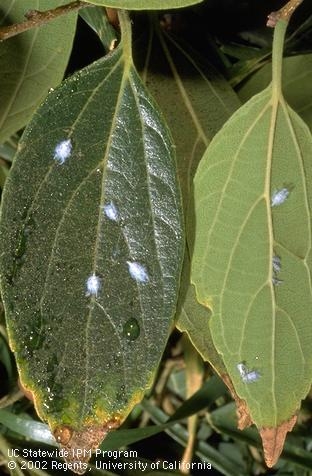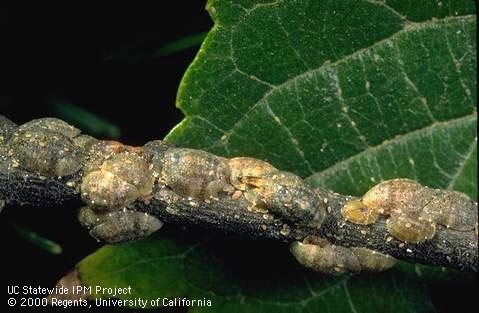
The sticky substance is called honeydew. The honeydew is excreted by a number of sap-sucking insects such as aphids, whiteflies, mealybugs, certain scale insects, and few others. On hackberry trees (widely planted in some cities), an insect called the woolly hackberry aphid produces a large amount of honeydew.
If you examine the tree's leaves, you may see bluish-white masses that are actually this insect in disguise, coated in a pale wax that makes them appear fuzzy. In addition to the mess caused by the honeydew, you may also notice a black, sooty mold growing on the leaves. Although honeydew and sooty mold can be a nuisance, no long-term or serious damage to hackberry trees has been found, even after years of aphid infestations.
To learn more about the woolly aphid, see the UC IPM Pest Notes: Hackberry Woolly Aphid. If the sticky tree you park under is your own, the Pest Notes will help you find solutions to manage the aphid population should you choose to do so.

Other shade trees can also get different types of aphids, scales, and other honeydew-producing pests. Find information about these other plant sucking pests and their damage and management at http://ipm.ucanr.edu/PMG/invertebrates/menu.aphidsthrips.html.